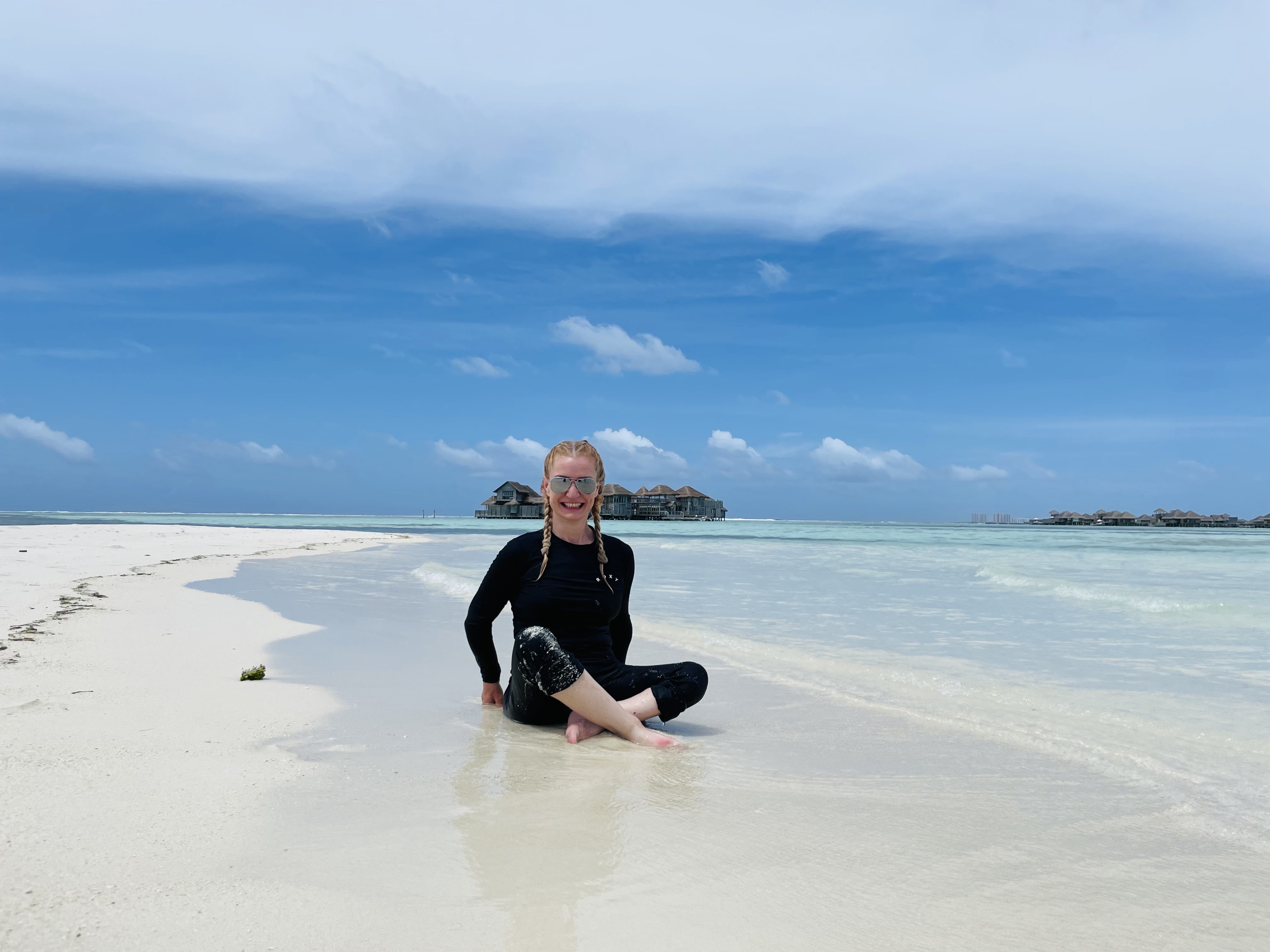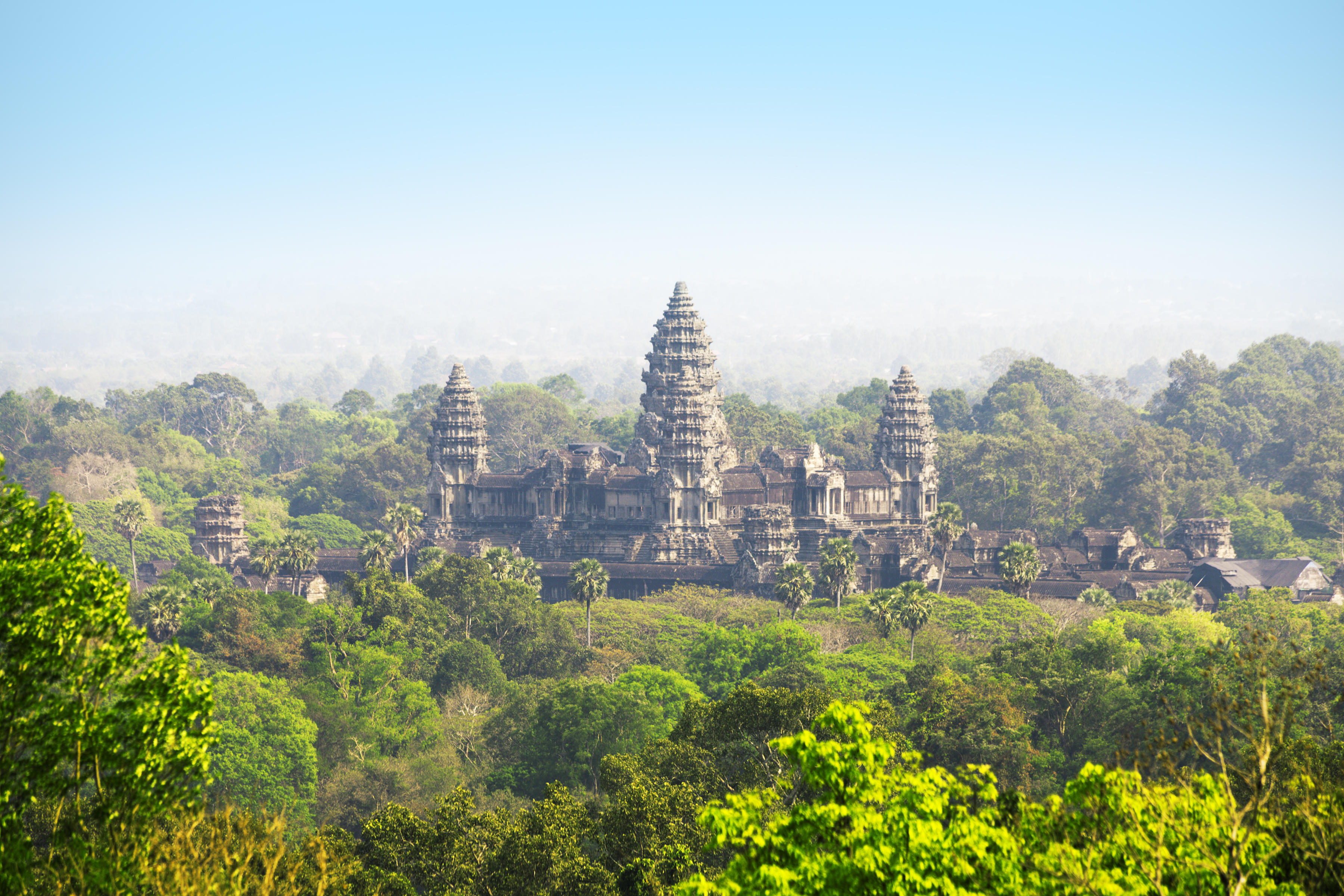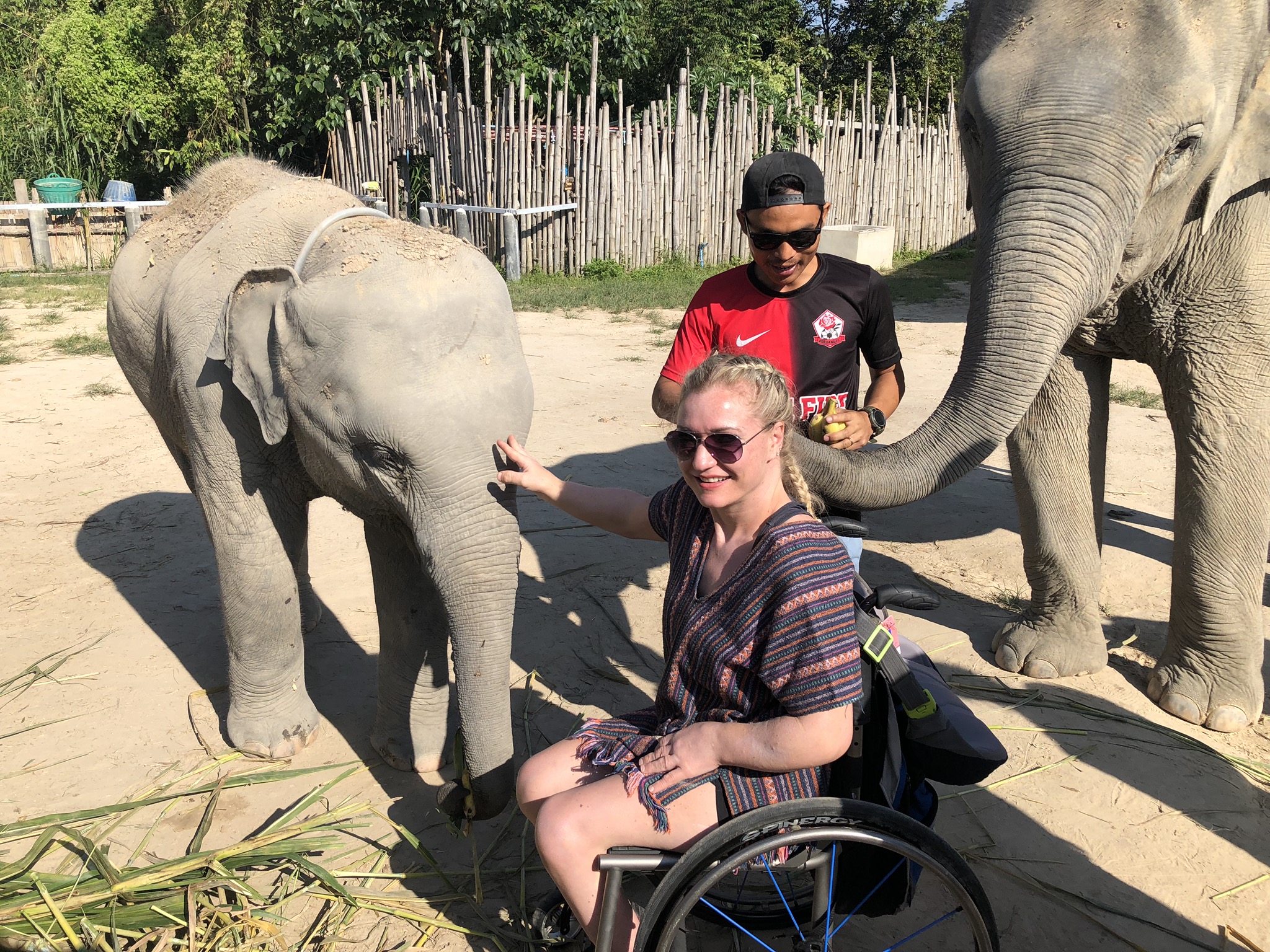I started travelling when I was a young girl, growing up in Maria Stein, Ohio, in the US. I was born with a skeletal disorder — I have used a wheelchair almost my entire life — and spent much of my childhood travelling around America to seek treatment from specialists. I often call my love for travel the silver lining of my disability.
Fast-forward to me being 38 years old, when I decided to leave my successful career as an insurance executive. My mission was to reshape my views of humanity. I had always dreamt of taking a mid-career break and had been saving for a trip like this for more than 15 years — it was important to me that I completely fund the trip on my own. But when I started experiencing post-pandemic burnout, I knew the time had come.
I planned to be away for one year, with one or two trips back to the US to see my family. I knew I wanted to travel in Southeast Asia — Indonesia, Malaysia, Brunei and Singapore — so I booked a one-way ticket to Bali, with no definite plans for where I would go after that.

In the weeks leading up to my trip, I was incredibly afraid. I read as much as I could about each place I wanted to visit. While some were supposedly wheelchair accessible, I knew from previous travel experience that accessibility means different things in each country, and often each hotel. How would I manage? What if I couldn’t get into the hotels I’d booked? Or worse, what if the bathrooms weren’t accessible? While I could crawl up a flight of stairs if I needed to, that would hardly be ideal. Crawling into a bathroom would be even worse.
I’d travelled all over the world before this trip, but never for more than a few weeks at a time, and always with a loved one. My mum, siblings, friends or partner, Tony, would always be there to help when I needed them. This time, though, I was travelling completely alone. I would find out just how much — or how little — of the world is designed for people who use a wheelchair.
Advertisement
• Accessible travel: the best cruises for those with mobility issues
• The six mistakes to avoid when booking an accessible room
I anticipated there would be some challenges, but what I struggled with most was how my wheelchair was handled on planes. I never knew if it was going to be stored in the cabin or taken to the hold with the rest of the luggage. On previous trips, my wheelchair had been damaged and I worried that might happen as I arrived in a new place, completely alone.
On one flight I took during my travels, my wheelchair was accidentally sent to the wrong country. I arrived in Micronesia — a small island nation in the Pacific — but my wheelchair didn’t. It was devastating. The next flight wasn’t arriving for two days and the only wheelchair available was too big, not something I could comfortably use to explore the island. I spent most of my time in my hotel room and was only reunited with my wheelchair a few days later in the beautiful Marshall Islands.

The big draws in many countries are their ancient sites, such as Angkor Wat in Cambodia or the Colosseum in Rome, but they’re often the hardest places to navigate. It doesn’t matter how beautiful they are, I struggle to get around and often have to view historic sites from a distance.
When I visited the Anne Frank museum in Amsterdam, I was only able to view it from the ground floor, near the entrance. It’s the same for natural wonders too, such as the Patagonia region in South America. I am unable to hike through the typically rough terrain, so I can often only see them from a car or a café.
Advertisement
And so much of the world is covered in cobbles — for me, this is the most difficult terrain to manoeuvre on. I try to not let it stop me, but often I will opt out of seeing or experiencing something because it’s just too difficult to get to, sometimes even just a restaurant with tables on the street.
I have stayed at several hotels that were listed as accessible only to arrive and find out there were three or more steps to get to my room — too many to get up with my wheelchair. In some cases, even if I were able to get to my room, the bathroom door would be too narrow for my chair. I crawled to the loo when I had to.

In many of these situations, I didn’t speak the local language and my frustrations would be compounded knowing that I couldn’t communicate my needs.
But I didn’t give up. I couldn’t. I really, really wanted to see the world. If that meant that it might be harder for me than others, then I would fight through it.
But the thing about that, about not giving up, is that when I persevered, I was able to see a side of life that I would have missed had I not gone out to explore the world. I got to see it from a beautiful perspective shared by few others — that of a solo, female, disabled traveller.
Advertisement
When I was in Morocco and a screw fell out of my wheelchair, three young men working on the side of the street stopped to help me. They dismantled their motorcycles to find a screw that would fit into my wheel axle, then didn’t leave before they’d fixed it. The screw lasted until I made it back home.
In Sri Lanka, when I arrived at my hotel in Negombo late at night and found there were three steps up to the lobby, the staff carried me in my wheelchair up the stairs and told me they would build a ramp for me. I insisted it wasn’t necessary, but the next morning, a custom-built, perfectly designed ramp was sitting at the lobby entrance.

The people in Havana, Cuba, surprised me when I needed help up a flight of stairs to reach Paladar Los Mercaderes, the family-owned restaurant known for its authentic Cuban food and colonial-era façade. A young man driving a tuk-tuk-like Cocotaxi stopped and carried me up the stairs on his back.
Many years ago I was travelling with my family in Istanbul, Turkey. We had got on the wrong train and were lost in the middle of the night, but I remember one man who insisted on staying with us until we found our hotel. He wanted to make sure we made it there safely.
And in Bulgaria, when I arrived at my hotel to find the only available room was up six flights of stairs, the owners took it upon themselves to find me somewhere more suitable to stay. It was late but they walked with me for 25 minutes to make sure I found somewhere.
Advertisement
In total I’ve travelled to 124 countries and all seven continents, and have received a Guinness World Record for “most countries visited in one year using a wheelchair” — that was 66. The stories of kindness that I have from around the world are endless. And they are my most treasured stories, memories and lessons.
It might sound surprising, but I believe that travelling with a disability comes with a lot of advantages. I often get to jump queues at the airport, museums and other tourist attractions. I frequently get a discount to visit tourist sites too. But all of that is nothing compared to the special perspective I have been given — the chance to experience a true, authentic side of humankind. That’s what keeps me travelling.
Sign up for our Times Travel newsletter and follow us on Instagram and X
